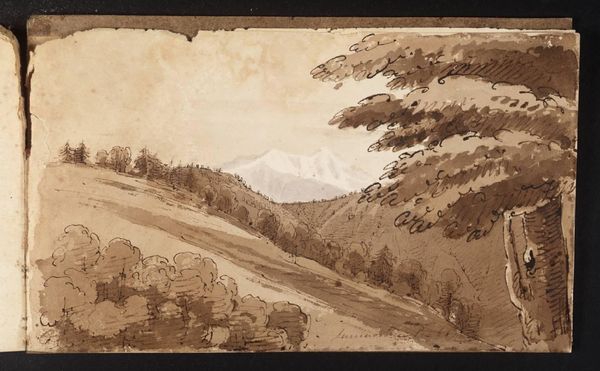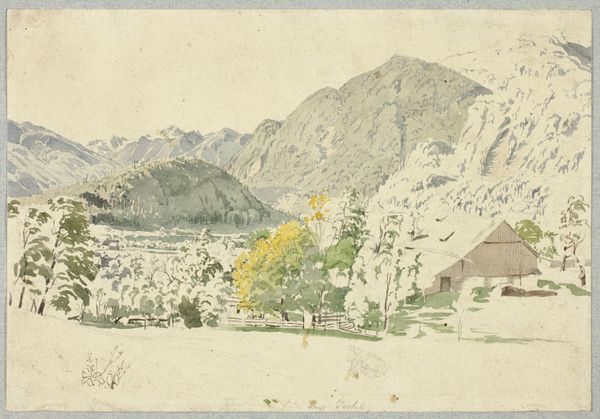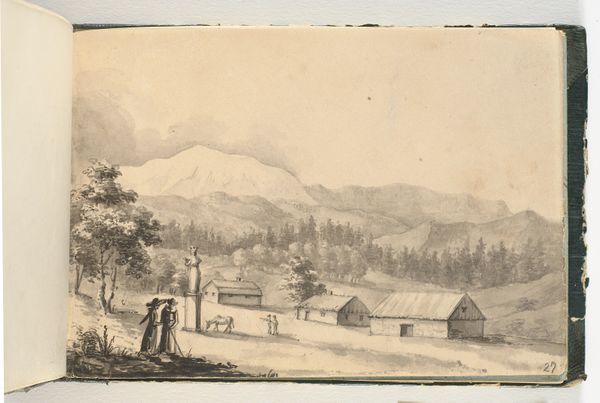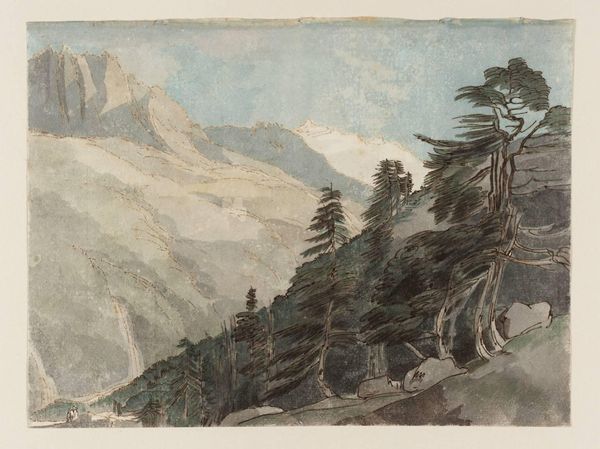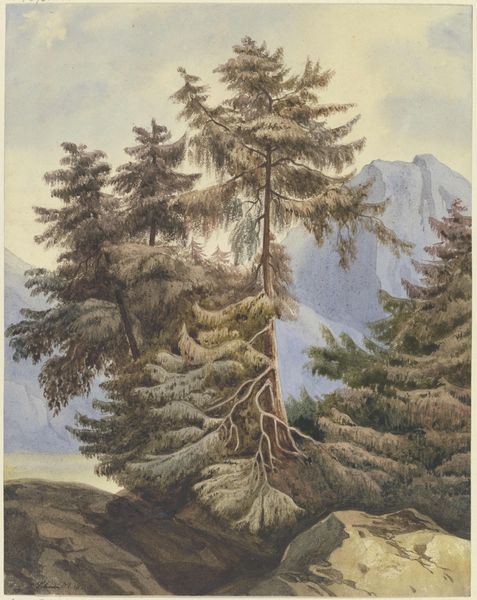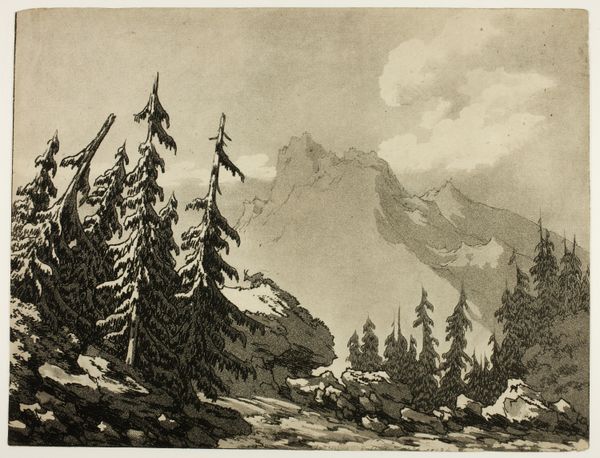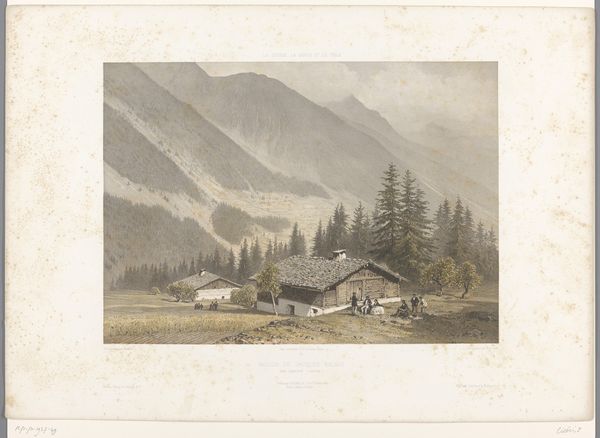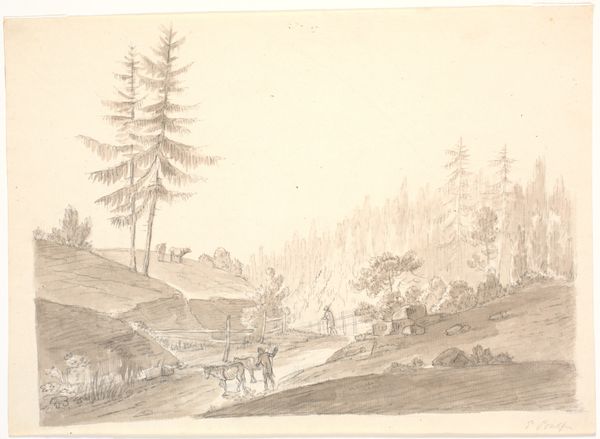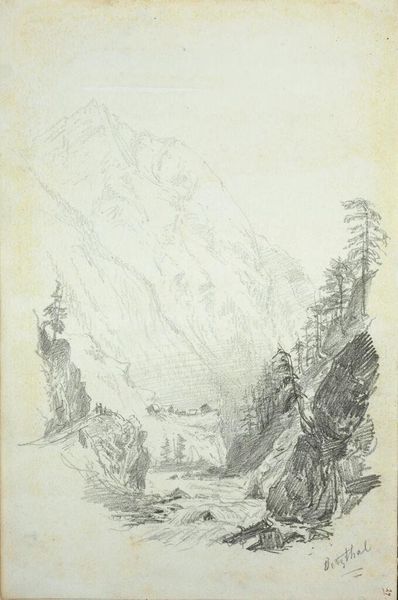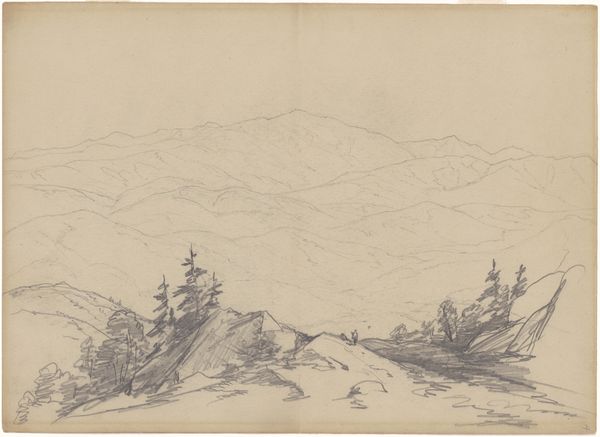
drawing, plein-air, watercolor
#
drawing
#
plein-air
#
landscape
#
watercolor
#
romanticism
#
realism
Dimensions: overall (approximate): 17.1 x 21.2 cm (6 3/4 x 8 3/8 in.)
Copyright: National Gallery of Art: CC0 1.0
Editor: Here we have "Alpine Landscape," a watercolor and drawing attributed to Friedrich Salathé. I’m really struck by its unfinished quality—the contrast between the detailed trees and the sketchy foreground creates an interesting tension. What can you tell me about this piece? Curator: This unfinished quality speaks volumes about artistic practice and the market forces at play. We see plein-air techniques being employed here. Note the detailed rendering of the foliage. To me this work offers insights into Salathé’s labor and the consumption of landscape imagery during his time. Editor: So, you're saying the materials and methods give us clues about the culture around the work? Curator: Exactly. How does the use of watercolor impact the speed of production compared to, say, oil painting? What implications does that have for Salathé's income? Think about the social status associated with landscape art during the Romantic and Realist movements—how does that affect who can commission and consume such work? This wasn't just about representing nature; it was about turning nature into a commodity. And consider the implications of rendering the landscape for emerging tourist markets. Editor: I see. The "unfinished" quality makes me realize it’s not just about a pretty scene; it is about how the landscape becomes something to consume. What is it, do you think, about watercolor that allowed a material change in landscape artwork? Curator: Watercolor's portability lent itself well to creating souvenirs or preliminary sketches for larger, more "important" works. The speed with which one could capture a scene made landscape as material available to wider markets. Think about how this affected Salathé's status as a landscape painter during that period and beyond. Editor: That gives me a lot to think about; I definitely see this artwork differently now. The context around the work transforms our appreciation of its aesthetics. Curator: Precisely! Focusing on materiality shifts the conversation away from purely aesthetic judgments and instead invites an examination into production and consumption.
Comments
No comments
Be the first to comment and join the conversation on the ultimate creative platform.
